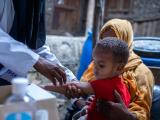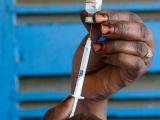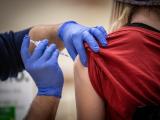Global patterns of people, food, and medication that flow easily alongside elusive pathogens create a perfect storm that poses enormous public health challenges, such as two new viruses identified in China and the Middle East, a top US health officials said today.
Tom Frieden, MD, MPH, director of the US Centers for Disease Control and Prevention (CDC), said in a speech before the National Press Club in Washington, DC, that the new H7N9 avian flu virus detected in China earlier this year is a good example of the emerging risk.
Scientists are now identifying one new infectious disease each year, such as Middle East respiratory syndrome coronavirus (MERS-CoV), he said. And, on an average day, one new investigation is launched to explore a possible new threat.
Using a "cough heard around the world" theme, Frieden outlined other key infectious disease threats, including drug-resistant tuberculosis, healthcare-associated infections (HAIs), including carbapenem-resistant enterobacteriaceae, and potentially lethal bioweapon attacks, such as with Bacillus anthracis, which causes anthrax.
"We are all connected through the air that we breathe," Frieden said, noting that influenza is one of the main infectious diseases that keep public health officials awake at night. "There’s nothing that kills as many people as influenza."
Though health officials are making good use epidemiologic investigations and current technology to detect and quash disease outbreaks, the process could be streamlined with better and faster genome sequencing techniques and tools, Frieden said.
However, he said funding shortfalls and the anticipated effects of budget sequestration have kept the CDC from investing in advanced molecular detection tools and have kept states, despite improving economies, from hiring back some of the 46,000 public health jobs that were lost over the past 4 years.
Frieden said another top challenge over the next decade is to strengthen collaboration between healthcare providers and public health, not just to help drive down the number of HAIs, which lead to about 100,000 deaths each year. He said more collaboration between the two groups could also help identify infections that are "hiding in plain sight," such as HIV and hepatitis C, in many patients who are already in the healthcare system.
In another public health development in Washington, DC, today the White House recognized eight people as public health Champions of Change. One is Marion Kainer, MD, MPH, a physician and epidemiologist with the Tennessee Department of Health who played a key role in identifying the first fungal meningitis infections that were part of a multistate outbreak linked to contaminated steroid injections.
Frieden said Kainer’s quick work in identifying the outbreak resulted from the good long-standing relationships she's had with the state's healthcare community. The Champions of Change is a weekly program that recognizes people in different fields who spark innovative ideas or initiatives in their fields of expertise.
In a press release today, Jeffrey Levi, PhD, executive director for Trust for America’s Health (TFAH), said the group is pleased to join the White House in honoring the public health Champions of Change.
"These leaders are taking innovative approaches to improve the health of people in their communities—and showing real results," Levi said. "Prevention is one of the most common-sense ways we can save lives and reduce healthcare costs, and the efforts of these champions show how to put prevention to work in effective ways."
See also:
National Press Club announcement
White House Champions of Change page
Sep 10 TFAH statement




















